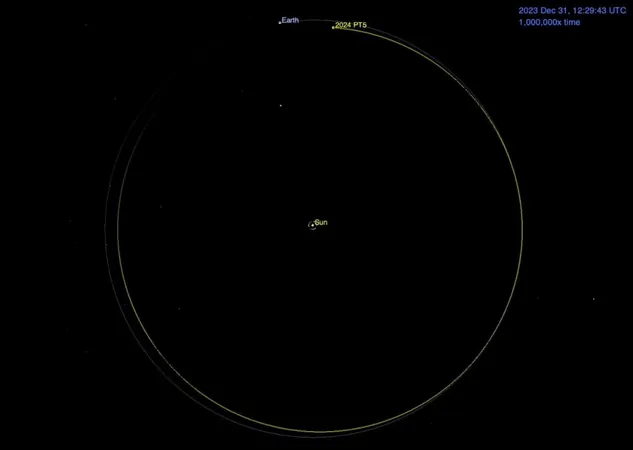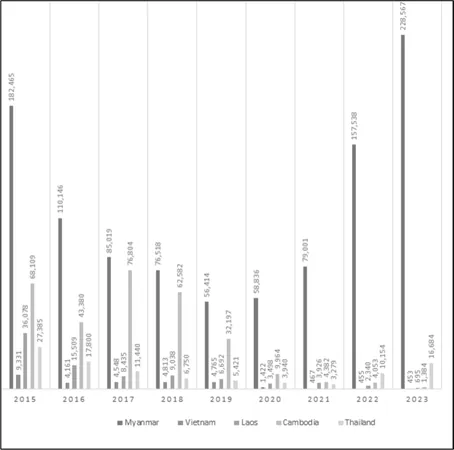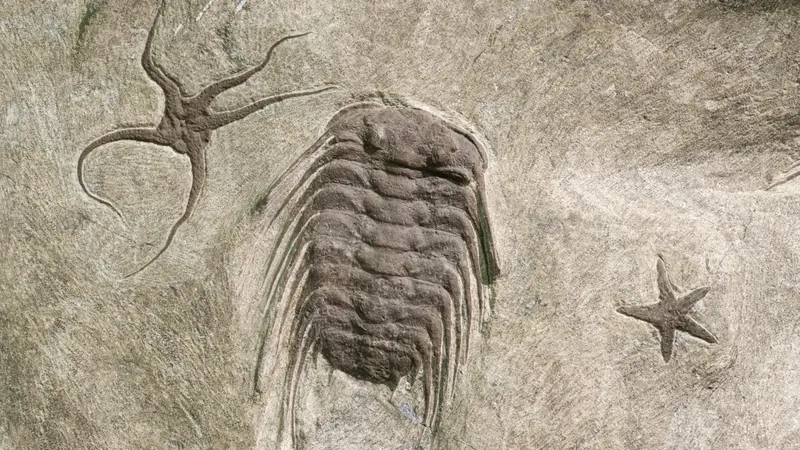
Shocking Discovery: Earth’s Temporary Moon Might Be a Visitor from Our Own Lunar Neighbor!
2025-01-15
Author: Sarah
Shocking Discovery: Earth’s Temporary Moon Might Be a Visitor from Our Own Lunar Neighbor!
In a groundbreaking revelation that has scientists buzzing, a diminutive asteroid known as Near-Earth Asteroid (NEA) 2024 PT5 (or PT5 for short) may very well be a fragment of our Moon, swinging by Earth for a brief visit. This fascinating celestial object was identified in August 2024 and has caught the attention of planetary scientists due to its unusual characteristics and orbit.
The Intriguing Origins of PT5
PT5 shares a strikingly similar orbit with Earth, but what’s particularly fascinating is the potential that it originated from the Moon. Near-Earth space is often cluttered with various objects, ranging from defunct satellites to debris blasted from lunar impacts. This raises an important question: could PT5 be one of those lunar fragments?
Planetary scientists have scrutinized NEAs for years to unveil their origins. By studying their orbits, reflectance spectra, and physical properties, researchers can deduce whether these space rocks hail from familiar sources like the Main Asteroid Belt or from more exotic locations, such as the Moon itself.
Spectroscopic Scans Reveal Mysteries
A team utilizing the Lowell Discovery Telescope in Flagstaff, Arizona, conducted reflectance spectroscopy on PT5 shortly after its discovery. They found compelling evidence that suggests a lunar origin. Despite its size—just 10 meters wide—this rocky visitor presents unique features: its reflectance spectrum aligns closely with known lunar samples, but doesn't resemble most asteroids that typically feature olivine-rich compositions. Instead, PT5 is rich in pyroxene, suggesting it came from the Moon’s igneous crust.
Remarkably, if PT5 truly is lunar ejecta, it stands as only the second confirmed NEA with ties to the Moon. The implications of this are profound!
The Moon's Hidden Secrets
The existence of PT5 indicates that we may be on the verge of discovering an entire population of lunar fragments drifting through our neighborhood. As stated by leading astrophysicists, this could significantly enhance our understanding of both lunar and terrestrial impact histories. The data gleaned from studying these miniature moons can unravel how impacts have shaped not just our Moon, but also Earth and other bodies in the solar system.
Present estimates suggest there could be as many as 16 NEAs known to originate from the Moon, with projections hypothesizing 5 to 10 times more could be lurking in near-Earth orbits. Identifying and studying these objects promises to be crucial for future lunar research, particularly in light of NASA's Artemis program, which aims to return humans to the Moon and explore its resources.
Looking Ahead: Future Observations
As PT5 approaches Earth once more later in the month, NASA plans to conduct radar tracking and additional observations. This presents a golden opportunity to delve deeper into the cosmic mysteries surrounding this asteroid and perhaps unveil more about its lunar origins.
With the quest to discover more lunar fragments intensifying, researchers are rallying for advanced observational technology—think larger telescopes and innovative techniques—to unveil the hidden treasures that these small celestial visitors may harbor. Such initiatives could redefine our understanding of impact events and their remnants in the solar system.
Stay tuned as we follow the thrilling developments in this extraordinary cosmic narrative, which connects Earth, the Moon, and potentially even Mars through their shared history of impact events. The quest for our "mini-Moon" has only just begun!


 Brasil (PT)
Brasil (PT)
 Canada (EN)
Canada (EN)
 Chile (ES)
Chile (ES)
 Česko (CS)
Česko (CS)
 대한민국 (KO)
대한민국 (KO)
 España (ES)
España (ES)
 France (FR)
France (FR)
 Hong Kong (EN)
Hong Kong (EN)
 Italia (IT)
Italia (IT)
 日本 (JA)
日本 (JA)
 Magyarország (HU)
Magyarország (HU)
 Norge (NO)
Norge (NO)
 Polska (PL)
Polska (PL)
 Schweiz (DE)
Schweiz (DE)
 Singapore (EN)
Singapore (EN)
 Sverige (SV)
Sverige (SV)
 Suomi (FI)
Suomi (FI)
 Türkiye (TR)
Türkiye (TR)
 الإمارات العربية المتحدة (AR)
الإمارات العربية المتحدة (AR)